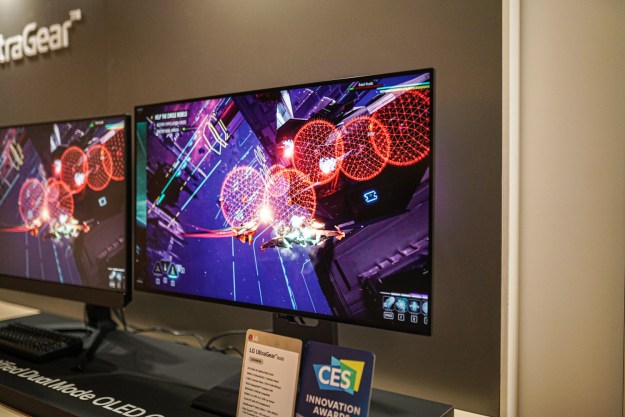
Laptops with foldable screens have been around for years, but a portable monitor might end up being a more approachable use of the technology. At CES 2024, Asus announced the ZenScreen Fold, a 17.3-inch OLED monitor that can fold up into exactly half that size.
It looks very similar to the ZenBook Fold 17 launched in 2022, but a little slimmed down in thickness and sporting a silver aluminum chassis. It’s 0.38 inches thick when unfolded (and 0.76 inches when folded) and weighs 2.65 pounds. In a sense, it’ll feel like carrying around a second small laptop with you, but once you sit down and unfold that screen to see its glorious expanse of screen real estate, I’m guessing you won’t mind having lugged it in your bag.
Using the built-in kickstand, you can prop up the monitor horizontally or vertically — both of which seem like useful orientations for getting work done. The monitor connects via USB-C to your laptop, but it also has a mini-HDMI port to integrate into a larger setup.
This feels like a more reasonable application for foldable display technology than a full-on foldable laptop. It’s asking a lot to reinvent someone’s entire PC with the quirkiness of a foldable screen. But adding on a large secondary monitor that folds down into something much smaller for carrying around? That’s a no-brainer.
We don’t yet know the official price, but it’ll likely be under $1,000. Again, that makes it far more approachable than the expensive foldable laptops out there, such as the HP Spectre Foldable that came out late last year.
Editors' Recommendations
- 4 gaming monitors you should buy instead of the Alienware 34 QD-OLED
- MSI is getting slammed on Reddit for a controversial monitor decision
- MSI and Asus just flipped the script for their OLED gaming monitors
- There’s a war brewing over OLED gaming monitors
- Why Alienware remains the undisputed champ of OLED gaming monitors





